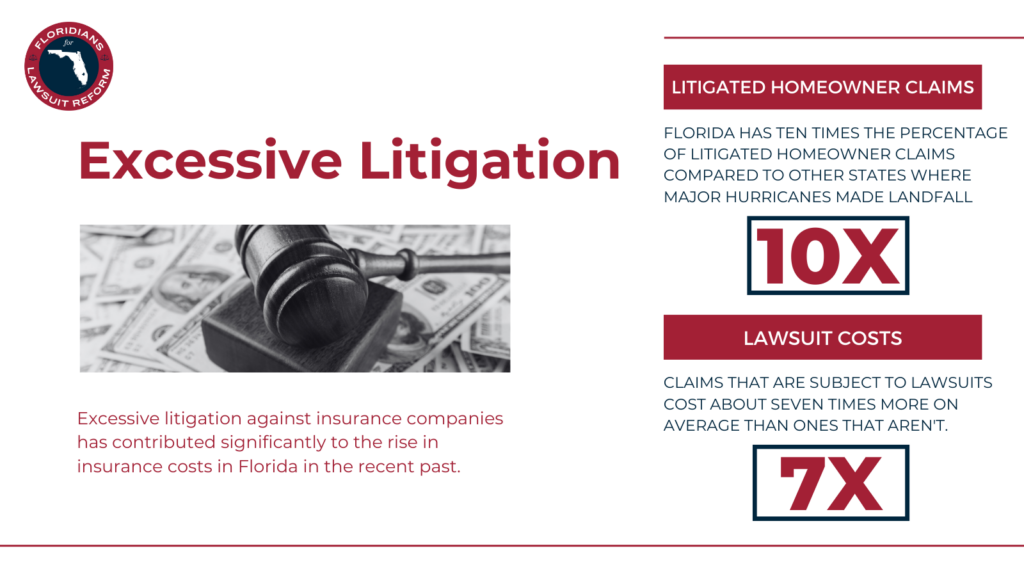
Published: 10:04 AM EDT October 12, 2023
Updated: 10:04 AM EDT October 12, 2023
ST. PETERSBURG, Fla. — Florida’s insurance premiums are the highest in the nation, and a new analysis suggests that they will not be going down anytime soon.
With homeowners’ insurance companies dropping Florida clients and existing insurance premiums skyrocketing, many residents have demanded new laws and legislative actions to lower their insurance premiums. However, insurance experts say that there are multiple factors outside of legislative policy that are driving up insurance prices.
Insurance companies and government officials, including Gov. Ron DeSantis, have attributed rising insurance costs to an excess of lawsuits against insurance companies. According to Karen Clark & Co., a catastrophe modeling firm, litigation is just one factor of many.
In a five-page report, the company says that the more claims and expected losses there are in an area, the higher the insurance premiums go. With that in mind, the main factors that have driven up insured losses in Florida over the past several years are hurricanes, other forms of extreme weather (like tornadoes and hail storms), inflation and excess litigation.
“Only one of these factors can be influenced by the Florida legislature,” the report said.
Hurricane season is getting worse
Data from Karen Clark & Co’s analysis showed that the number of major hurricanes (Category 3 hurricanes or higher) to hit the coastline has dramatically increased. Since the year 1900, 10 major hurricanes have hit the US coast. Four of them have hit over the past five years. Of those four, two of them made landfall in Florida (Hurricane Michael in 2018 and Hurricane Ian in 2022).
There is a consensus among scientists that manmade global warming and climate change have caused more intense hurricanes to form, leading to an increase in the number of hurricanes that make landfall at Category 3, 4, or 5 strength. This is a trend that, according to the Intergovernmental Panel on Climate Change, is only going to continue, even in best-case-scenario climate models.
This also applies to other types of extreme weather, particularly storms with heavy winds, tornadoes and hail. Storms like these have caused the most damage to homes in Florida, and evidence shows that rising water temperatures in the Gulf have effectively shifted storms from the Midwest U.S. to the Southeast. The number of insured losses in Florida due to extreme weather has been steadily rising since 2021, and that is not expected to change anytime soon.
Homes are getting more expensive to build
The odds that a home will be damaged by severe weather isn’t the only factor taken into consideration when calculating insurance premiums. There’s also how much it will cost to repair or rebuild the home.
Florida has the highest inflation rate in the U.S., and the Tampa Bay area has one of the highest inflation rates reported, according to the U.S. Bureau of Labor Statistics. The combination of high inflation and recent shortages of labor and materials have all combined to dramatically increase construction costs in Florida, averaging about 40 percent higher than they did in 2017.
What is controllable?
Karen Clark & Co’s analysis says that while there are factors beyond legislative control causing homeowner premiums to rise, recent laws targeting lawsuits against insurers might at least keep future premium hikes smaller than they might otherwise have been.
According to data, Florida had 10 times the percentage of litigated homeowner claims compared to other states where major hurricanes made landfall. On average, claims that are subject to lawsuits cost about seven times more on average than ones that aren’t. With new laws reducing the amount of insurance claims taken to court, one of the factors driving up future premium costs might be mitigated.
And if, in the future, tougher building codes are enacted to make them more adaptable to extreme climate, existing homes and properties are updated and retrofitted with extreme weather protection, and the use of land is regulated to be more environmentally sustainable, that could potentially mitigate the rate of premium increases even more.
But even then, the risk of hurricanes and other forms of extreme weather brought on by climate change combined with the rising construction costs will likely keep homeowners insurance premiums high for the foreseeable future.
